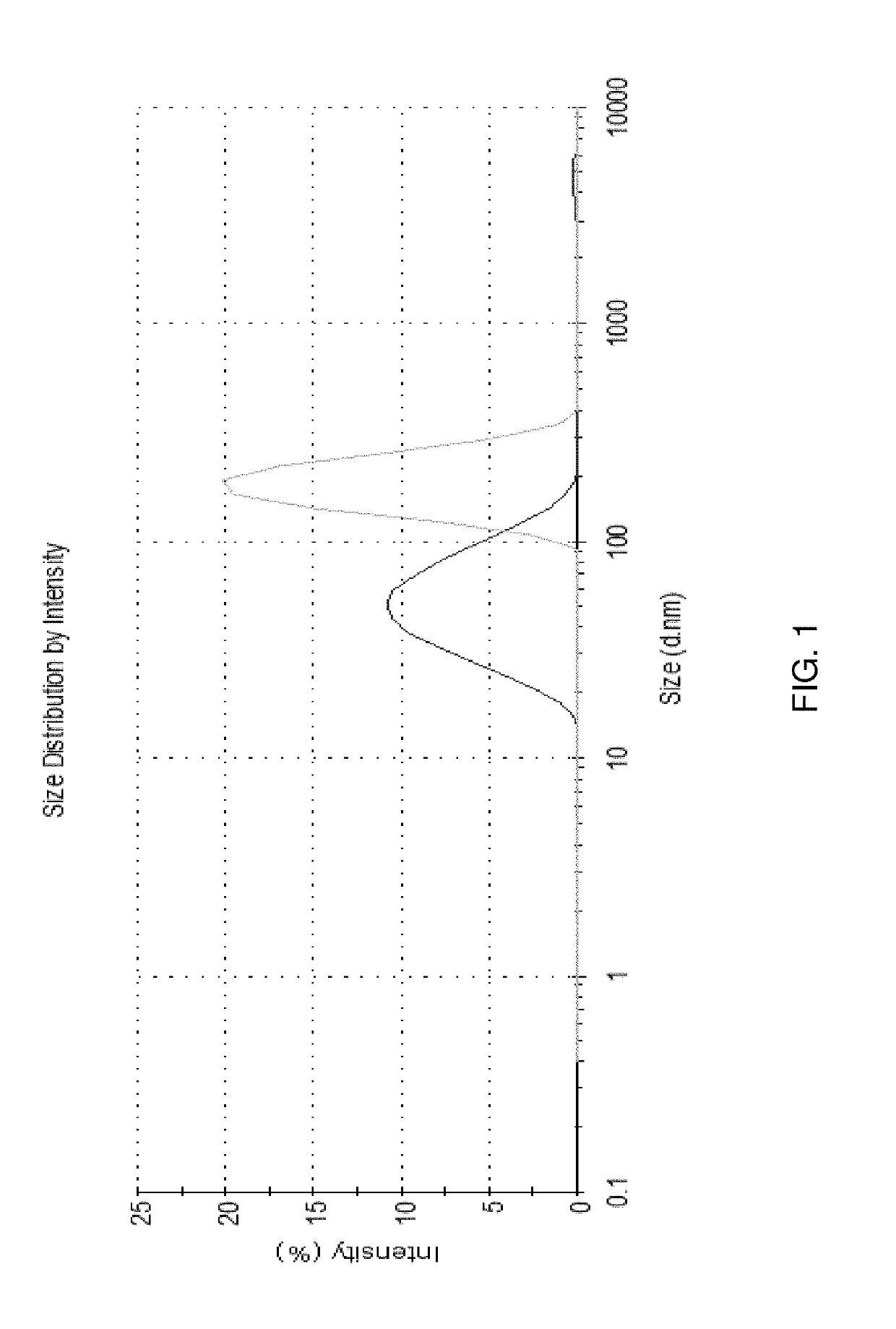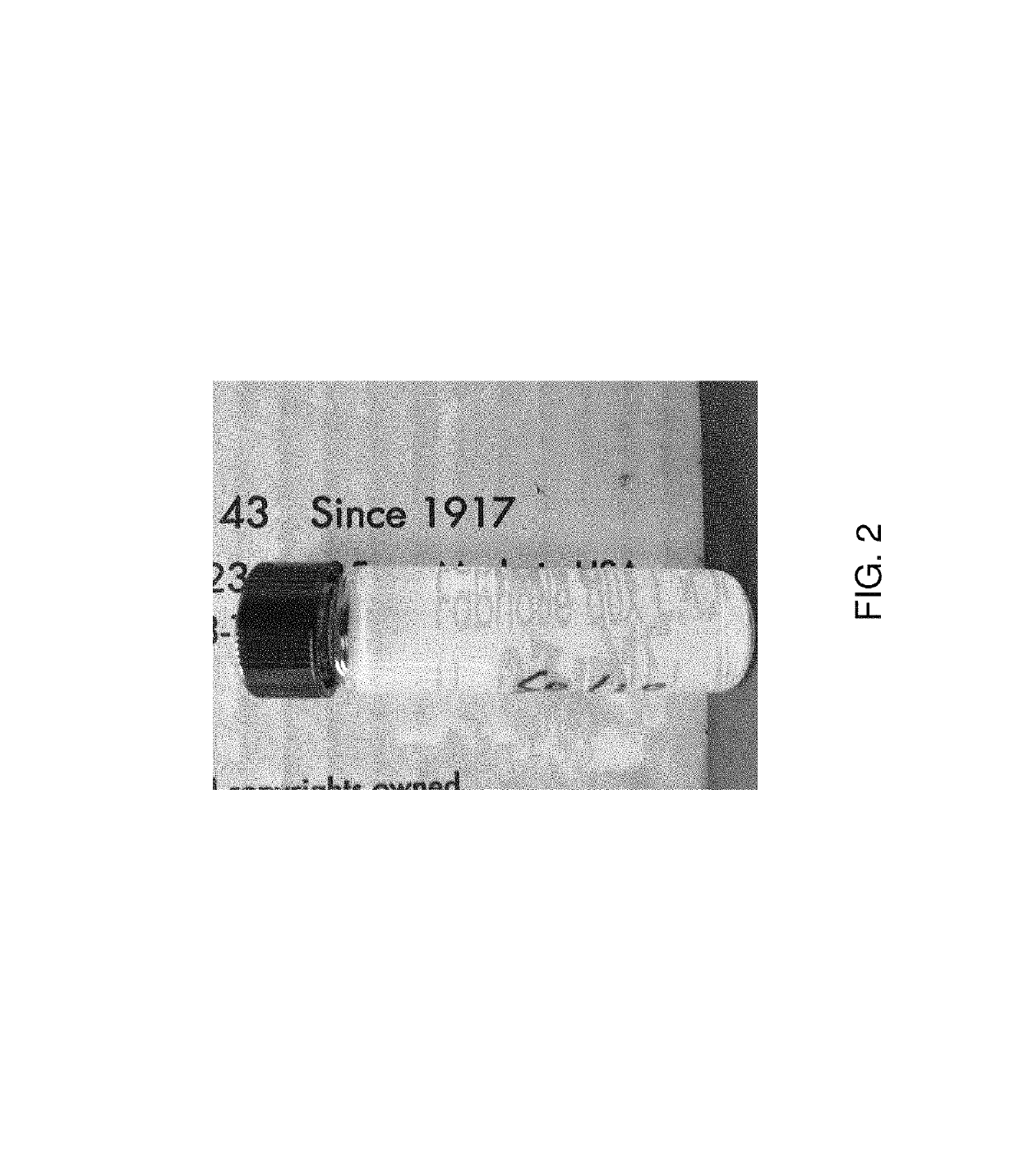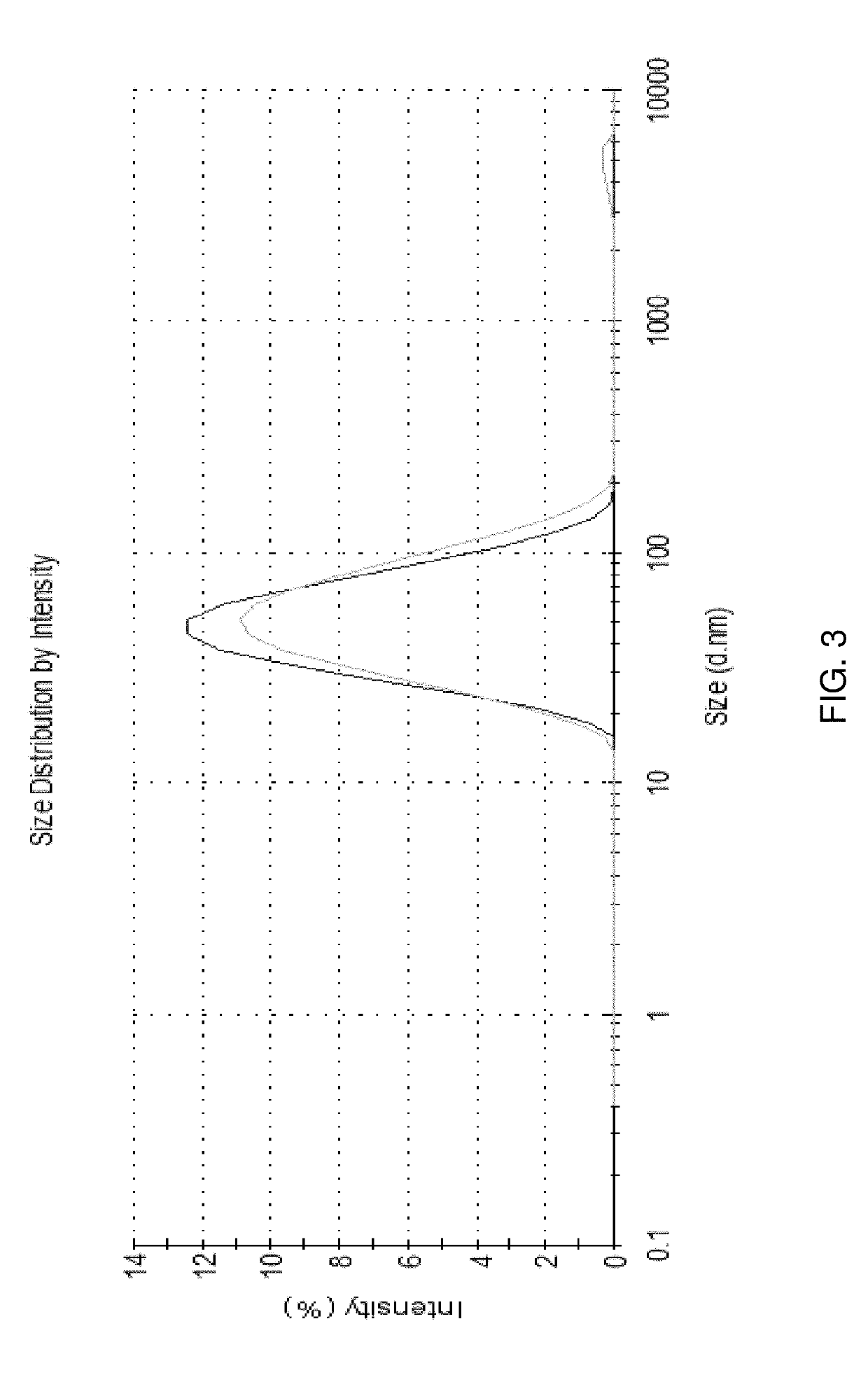Compositions for nanoemulsion delivery systems
a nanoemulsion and nanoemulsion technology, applied in the direction of drug compositions, oil/fat/waxes non-active ingredients, immunologic disorders, etc., can solve the problems of low solubility, difficult to develop bioavailable and physical stable pharmaceutical and nutraceutical products, taste issues,
- Summary
- Abstract
- Description
- Claims
- Application Information
AI Technical Summary
Benefits of technology
Problems solved by technology
Method used
Image
Examples
example 1
Preparation of Nanoemulsion Using Soybean Oil and without Active Ingredient
[0072]
Quantities:Formulagsoy bean oil20.0egg lecithin7.2polysorbate 807.2sodium hydroxideq.s. to pH 6-9Water for Injectionsto 100 g[0073]All processing stages are carried out under nitrogen.[0074]An aqueous oil-in-water nanoemulsion is prepared as follows:[0075]1. An aqueous phase is prepared from Water for Injections, stirred and heated to a temperature of approximately 60° C.[0076]2. The aqueous phase is passed through a 0.22 micron filter and charged to a mixing vessel.[0077]3. Separately, an oil phase is prepared from soy bean oil that has been passed through a 0.22 micron filter, polysorbate 80, and egg lecithin, in a vessel. The mixture is stirred at a temperature of approximately 60° C. until all ingredients are dissolved.[0078]4. The mixture is added to the aqueous phase.[0079]5. This mixture is then mixed with a high shear mixer (Polytron PT3100) at 10,000 rpm for 5 minutes to obtain a coarse emulsio...
example 2
Preparation of Nanoemulsion of Soybean Oil and Loaded with Active Drug-cyclosporine
[0083]
Quantities:Formulagcyclosporine0.2soy bean oil20.0egg lecithin7.2polysorbate 807.2glycerol2.25sodium hydroxideq.s. to pH 6-9Water for Injectionsto 100 g[0084]All processing stages are carried out under nitrogen.[0085]An aqueous oil-in-water nanoemulsion is prepared as follows:[0086]1. An aqueous phase is prepared from glycerol, and Water for Injections. This mixture is stirred and heated to a temperature of approximately 60° C.[0087]2. The aqueous phase is passed through a 0.22 micron filter and charged to a mixing vessel.[0088]3. Separately, an oil phase is prepared from soy bean oil that has been passed through a 0.22 micron filter, cyclosporine, polysorbate 80, and egg lecithin, in a vessel. The mixture is stirred at a temperature of approximately 60° C. until all ingredients are dissolved.[0089]4. The mixture is added to the aqueous phase.[0090]5. This mixture is then mixed with a high shear...
example 3
Preparation of Nanoemulsion of Soybean Oil / Medium Chain Triglyceride and Loaded with Active Drug-cyclosporine
[0095]
Quantities:Formulagcyclosporine0.2soy bean oil10.0Medium chain triglyceride10.0egg lecithin7.2Polysorbate 807.2glycerol2.25sodium hydroxideq.s. to pH 6-9Water for Injectionsto 100 g[0096]All processing stages are carried out under nitrogen.[0097]An aqueous oil-in-water nanoemulsion is prepared as follows:[0098]1. An aqueous phase is prepared from glycerol, and Water for Injections. This mixture is stirred and heated to a temperature of approximately 60° C.[0099]2. The aqueous phase is passed through a 0.22 micron filter and charged to a mixing vessel.[0100]3. Separately, an oil phase is prepared from soy bean oil and medium chain triglyceride (Migloyol 812) that has been passed through a 0.22 micron filter, cyclosporine, polysorbate 80, and egg lecithin, in a vessel. The mixture is stirred at a temperature of approximately 60° C. until all ingredients are dissolved.[010...
PUM
| Property | Measurement | Unit |
|---|---|---|
| mean droplet size | aaaaa | aaaaa |
| mean droplet size | aaaaa | aaaaa |
| intensity-averaged diameter | aaaaa | aaaaa |
Abstract
Description
Claims
Application Information
 Login to View More
Login to View More - R&D
- Intellectual Property
- Life Sciences
- Materials
- Tech Scout
- Unparalleled Data Quality
- Higher Quality Content
- 60% Fewer Hallucinations
Browse by: Latest US Patents, China's latest patents, Technical Efficacy Thesaurus, Application Domain, Technology Topic, Popular Technical Reports.
© 2025 PatSnap. All rights reserved.Legal|Privacy policy|Modern Slavery Act Transparency Statement|Sitemap|About US| Contact US: help@patsnap.com



